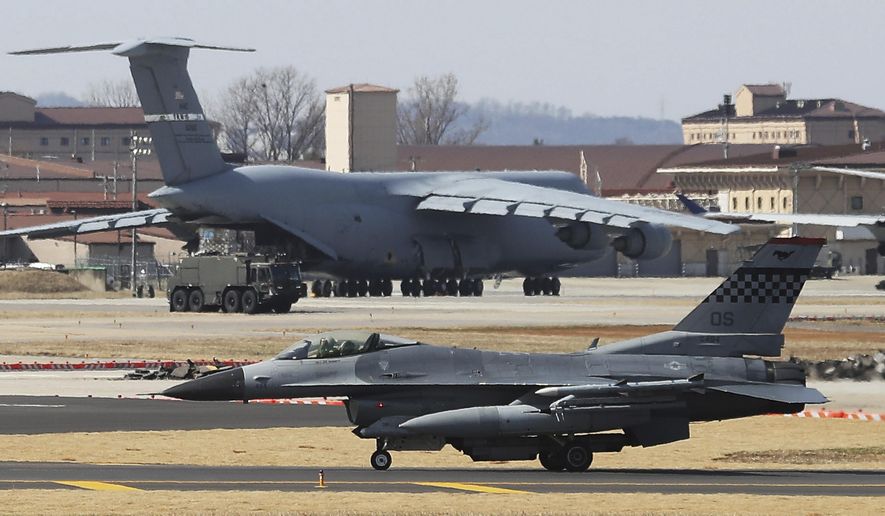SEOUL, South Korea (AP) — Annual U.S.-South Korean military drills that infuriate North Korea will begin on April 1, the allies said Tuesday, but they will likely be more low-key than past years ahead of two highly anticipated summits among the countries’ leaders.
This year’s drills were postponed during the Pyeongchang Olympics, which saw rare cooperative steps between the rival Koreas after months of confrontation over the North’s weapons programs. North Korea considers the exercises an invasion rehearsal and often conducts weapons tests in protest.
After post-Olympics talks with North Korean leader Kim Jong Un, South Korean officials said Kim indicated he would accept the maneuvers. Kim also offered to meet personally with President Donald Trump to discuss giving up his nuclear weapons on unspecified terms, and Trump quickly agreed to meet Kim by the end of May. Kim and South Korean President Moon Jae-in are to meet separately in late April.
In a brief statement, the Pentagon said Defense Secretary Jim Mattis and his South Korean counterpart, Song Young-moo, agreed to go forward with the two sets of exercises, known as Foal Eagle and Key Resolve, “at a scale similar to” that of previous years. North Korea has been notified of the schedule “as well as the defensive nature” of the exercises, the Pentagon said.
South Korea’s Defense Ministry released a near-identical statement.
A ministry official, speaking on condition of anonymity because of department rules, said there are no immediate plans to bring in American strategic assets such as aircraft carriers, nuclear-powered submarines or supersonic B-1B bombers during this spring’s training. The United States sent such assets during past drills when tensions ran high.
The exercises begin with Foal Eagle, a field training drill that will last about four weeks, compared with its typical two-month run. The other drill, known as Key Resolve, is a computer-simulated command post exercise and is scheduled to start around the middle of April for a usual two-week run, the South Korean official said.
“These are low-key drills. Now it’s a dialogue mode so they are trying to keep pace with that,” said Choi Kang, vice president of Seoul’s Asan Institute for Policy Studies.
Choi said North Korea may respond by issuing a relatively mild diatribe but will likely avoid conducting weapons tests that could disrupt its recent outreach to Washington and Seoul.
The timing and size of the annual maneuvers are especially sensitive this year because of heightened worry over the North’s accelerated work last year on a nuclear-armed missile potentially capable of reaching the United States. This was followed, unexpectedly, by prospects for a diplomatic solution to the nuclear crisis.
“To avoid compromising exercise objectives, specifics regarding the exercise scenarios will not be discussed,” said a Pentagon spokesman, Marine Lt. Col. Christopher Logan. He said the purpose is to enhance the ability of the U.S.-South Korean alliance to defend South Korean territory.
The planned summit meetings have raised hopes for a potential breakthrough in the North Korean nuclear crisis. But many experts say tensions will flare again if the summits fail to make any progress and leave the nuclear issue with few diplomatic options.
A main sticking point in U.S.-North Korea talks would be what nuclear disarmament steps Kim would promise in return for what concessions from the United States and whether Trump would accept them.
___
Burns reported from Washington.




Please read our comment policy before commenting.